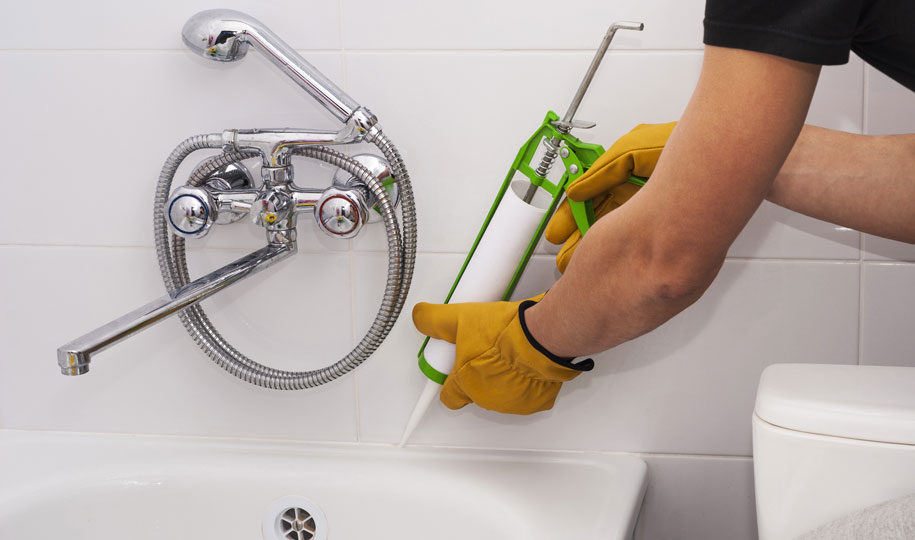Your refrigerator is a key appliance in your daily life, keeping perishable foods at a safe temperature and allowing you to stock up on ingredients for meal preparation. But what is the correct temperature for a fridge?
It's crucial to understand the appropriate temperature setting for your refrigerator to maintain the freshness of food and inhibit bacteria growth that might lead to foodborne diseases. In this guide, we'll explain the best temperature for a refrigerator and freezer and what you can do to help keep your refrigerator cold.
What Temperature Should a Refrigerator Be?
How cold should a refrigerator be? The U.S. Food and Drug Administration (FDA) recommends that a refrigerator should be set at or below 40 degrees Fahrenheit to maintain a safe temperature for storing food. This lower temperature inhibits the growth of microorganisms that can cause dangerous foodborne illnesses, like E. coli, listeria, and salmonella.
These bacteria can potentially grow rapidly in temperatures above 40 degrees Fahrenheit, so maintaining this correct refrigerator temperature is critical for your health. Make sure to refrigerate perishable food as quickly as possible and remember the two-hour rule — do not leave food outside the fridge any longer than two hours. And if the heat outside is 90 degrees or more, get food refrigerated within an hour.
While 40 degrees Fahrenheit or below is the recommended fridge temperature range, you don't want to set your fridge too low. If the temperature is too low, food can freeze or form ice crystals. Your best bet is to keep the average fridge temp between 37 and 40 degrees Fahrenheit.
What Temperature Should a Freezer Be?
Naturally, your freezer is set to a much lower temperature to keep frozen food products stored safely. The FDA recommends setting a freezer's temperature at 0 degrees Fahrenheit. While this setting prevents the growth of illness-causing bacteria, it does not kill any bacteria that have already grown on the food.
Because bacteria could still survive on frozen food, it's important to take safety precautions when handling frozen items, like washing your hands, cleaning kitchen surfaces thoroughly and frequently, and putting food in the freezer as soon as possible.
Avoid putting too much food in the freezer so that the cold air can circulate freely throughout the interior space.
How to Set the Temperature of a Refrigerator
Every refrigerator model has different temperature controls, so review your owner's manual to determine where your fridge's settings are located and how to use them.
In general, though, you can follow the steps below to set your refrigerator temperature:
- Find the temperature control panel in your refrigerator (you may have to refer to your owner's manual).
- Set the thermostat to 40 degrees Fahrenheit or below.
- Leave the refrigerator for a few hours and then check the temperature. Most fridges come with a built-in thermometer, but if your model does not, you can use an appliance thermometer, which can be purchased at your local hardware store.
- If your refrigerator is not at 40 degrees or lower when you check it, continue to make small adjustments to the temperature until you reach the best temperature for a refrigerator.
Some refrigerator models don't allow you to set the temperature directly. Instead, they have a number setting of 1 to 5 or a low-to-high temperature setting. In this case, it's best to use an appliance thermometer to make sure that your fridge is at an optimal temperature to keep your food cold.
How to Keep Your Refrigerator Cold
Setting the correct refrigerator temperature is just the first step—you need to maintain that temperature to keep your food safe. Here are a few tips that you can use to keep your refrigerator cold:
- Avoid overfilling the refrigerator. A full fridge, while energy-efficient, can keep cold air from circulating properly.
- Clean the refrigerator coils to make sure they’re working properly. Consult your manufacturer's manual for specific instructions.
- Don't put hot food or drinks in the refrigerator.
- Don't push your refrigerator up against the wall. Review your owner's manual to determine the specific clearances required for your fridge to work properly.
- Avoid leaving the fridge door open for long periods.
If you're purchasing a new fridge, consider investing in a door-in-door model. This type of refrigerator has an exterior storage compartment in the door, which allows you to access some of the items in the refrigerator without opening the entire fridge and letting cold air escape. Not only does this help maintain the appliance's temperature, but it also conserves energy. For other tips, explore our appliance buying guide.
Refrigerator Storage Tips
Another way to maintain the best temperature for a refrigerator is to understand the best ways to store food in the fridge.
Follow these food safety and storage tips:
- Follow the two-hour rule: Don't leave perishable foods outside the fridge for more than two hours.
- Cooked food or takeout should also be refrigerated within 2 hours. You can divide large batches of food into smaller containers to help the food cool faster before placing it in the fridge.
- If you need to thaw or marinate frozen food, place it in the refrigerator, not on the counter.
What If the Power Goes Out?
If your home experiences a power outage, there are still things you can do to help keep your food cold to avoid having to throw out spoiled items. Make sure the fridge and freezer doors stay closed as much as possible—avoid opening them unless you absolutely must. And if the power stays out for more than four hours, some sensitive food items like uncooked meats will need to be thrown away.
If bad weather is forecast, you can prepare for a potential electricity outage by freezing water in quart-size plastic bags. You can then place these bags in the fridge to help maintain the cold temperature in the event of a power failure.
When to Replace Your Refrigerator
According to the U.S. Department of Energy, most refrigerators last about 10 to 12 years. You should prioritize refrigerator maintenance to keep your fridge performing normally for as long as possible. But how do you know when appliance quick fixes won't help and it's time to invest in a new fridge?
There are several signs that your refrigerator may have reached the end of its lifespan. If your fridge frequently makes loud noises or the fan always seems to be running, it may be time to replace the appliance. Other signs include a failure to maintain the set temperature of your refrigerator, the build-up of frost, and the back of the appliance becoming hot to the touch for unknown reasons. If you suspect a problem, you can also use a separate appliance thermometer to double-check the fridge temperature and ensure it is staying at the proper level.
Fortunately, regular maintenance and care of your refrigerator can help your appliance last longer. And with a First American home appliance warranty, you have a simple solution when your covered refrigerator breaks down. All you do is submit a claim and pay the service fee. We will find a prescreened technician who can arrange an appointment with you to come and diagnose the problem and repair or replace the fridge. Get a quote today to learn more about our home warranty plans and find the right one for your home.
The contents of this article are provided for general guidance only. First American Home Warranty does not assume any responsibility for losses or damages as a result of using this information.
Please be aware that if you disassemble a covered system or item, it can invalidate your home warranty or manufacturer's warranty.














